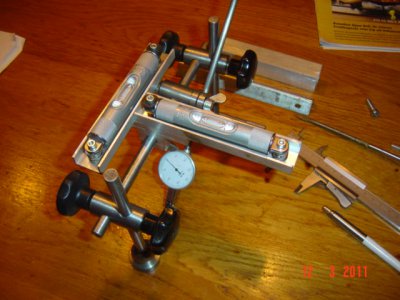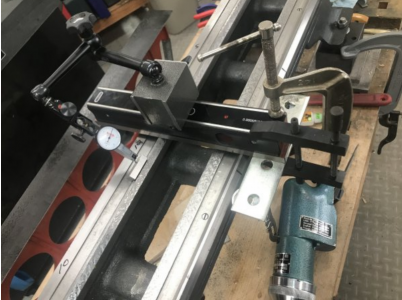There is a difference between the base aim of using (any one of several) methods to set up a lathe to not turn tapers, and what you might go through to measure up the state of the lathe surfaces relative to each other, with the aim of something more profound - like scraping the worn ways.
We also sometimes lose sight of what is "leveling" a lathe to get the ways aligned, and the different purpose of using levels to "measure deviations" and determine the condition of worn surfaces. A lathe does not actually have to be level, so long as all the ways and spindle and tailstock align, but in most situations, a horizontal level reference via a spirit level is the only starting point reference we have in order to get all the heavy deflecting parts in the correct position to each other. Highly convenient to use gravity this way. Lathes fixed into ship frames are tipping about all over the place all the time, and they work just fine, because the ways were set parallel to each other and the spindle axis, using the ship's construction reference when it was fixed in.
In theory, you could set up a lathe to some degree not level, just so long as the amount not level is the same everywhere, so that all the surfaces end up correct relative to each other
Rollie's Dad's method works, and is a way to get you there without a starting reference of known accuracy. It is a clever method that converges to correct, starting with nothing, but there are simpler faster ways to get there. If you start with a test bar already made to micron accuracy, and a DTI, you can find out a lot very quickly. Making your own dumbell test bar, and discovering the diameters are unequal brings the reference back to a micrometer - and by the time you are done, you have also made yourself a sort of test bar with two short sections.
One of the best, most educational explanations I have seen is from Quinn Dunki using glued together cocktail sticks.
How to Align Your Lathe
If your lathe has been standing with winding-twisted ways, the steel will have taken a set, and somewhat de-stressed into that shape. If you set about straightening it up, perhaps testing by using a level, or adjusting on the floor supports to get your test bar turnings to perfection, you may have it straight, but you will have re-introduced a stress to do it. Then over a day or two, the casting will "fight back", and you find you have to tweak it a little until it settles. I have read a tale that one can get a re-leveling to settle quickly by giving the end of the bed a couple of smacks with a hammer, but I don't know if this is true. It sounds a bit like folk who hang camel-back straight edge castings from one end, and then "ring" them with a hammer.



